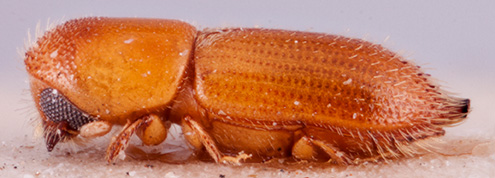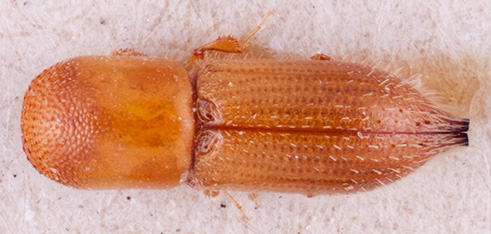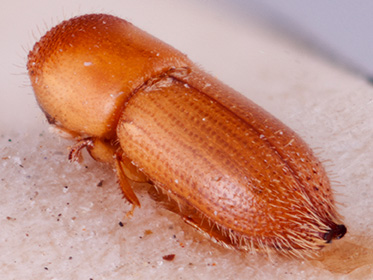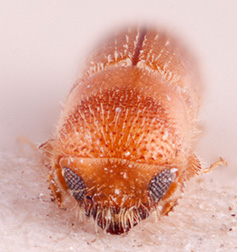Cryptoxyleborus barbieri
|
Cryptoxyleborus barbieri lectotype lateral; R.K. Osborn |
|
Cryptoxyleborus barbieri lectotype dorsal; R.K. Osborn |
|
Cryptoxyleborus barbieri lectotype declivity; R.K. Osborn |
|
Cryptoxyleborus barbieri lectotype frontal; R.K. Osborn |
Taxonomic history
Cryptoxyleborus barbieri Schedl, 1953a: 128.
Diagnosis
2.15−2.5 mm long (mean = 2.35 mm; n = 4); 3.31−3.57 times as long as wide. This species can be distinguished by the pair of subtriangular mycangial pits close to the scutellumscutellum:
a shield-like sclerotized plate located at the midpoint of the elytral base
on the dorsaldorsal:
of or relating to the upper surface; opposite of ventral
 elytral surface; antennalantennal:
elytral surface; antennalantennal:
pertaining to the antennae
funicle 4-segmented and elytralelytral:
pertaining to the elytra
apexapex:
point or edge furthest from the body; opposite of base
 truncate when viewed from behind, forming a small approximately oval, impunctate, flattened facet.
truncate when viewed from behind, forming a small approximately oval, impunctate, flattened facet.
May be confused with
Distribution
Brunei, Vietnam
Host plants
unknown (Smith et al. 2020bSmith et al. 2020b:
Smith SM, Beaver RA, and Cognato AI. 2020b. A monograph of the Xyleborini (Coleoptera, Curculionidae, Scolytinae) of the Indochinese Peninsula (except Malaysia) and China. ZooKeys 983: 1-442. https://doi.org/10.3897/zookeys.983.52630)
DNA data
specimens not available for sequencing





